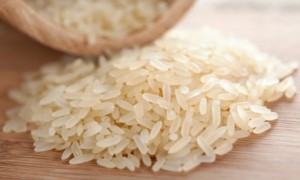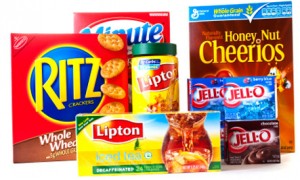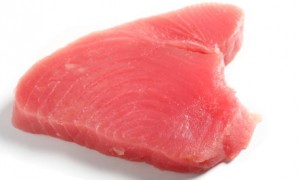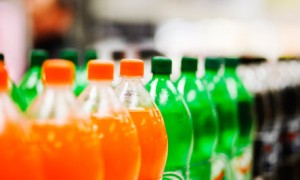You know what foods are bad for you, and you know you should eat them in moderation to stay healthy. However, there are also many foods that are bad for the Earth’s health.
Check out these 12 foods that are hurting the environment and learn how you can eat a more planet-friendly diet.
Rice
Rice is the major calorie source for half of the world’s population, but growing rice accounts for one-third of the planet’s annual freshwater use according to Oxfam. Luckily, a new farming method known as System of Rice Intensification has been developed that enables farmers to produce up to 50 percent more rice with less water. Oxfam is working to get rice-producing countries to convert 25 percent of their rice cultivation to SRI by 2025.
*Oxfam is an international confederation of 15 organisations working in 98 countries worldwide to find lasting solutions to poverty and injustice.
Genetically Modified Foods
As with human health risks, it is unlikely that all the potential environmental harms of genetically modified foods have been identified, but here are some of the main concerns about GMOs.
Lower level of biodiversity: By making a crop resistant to a certain pest, the food sources for other animals could be removed. Also, the addition of foreign genes to plants could be toxic and endanger the animals that consume the plant.
Spread of altered genes: Novel genes placed in crops won’t necessarily stay in designated agricultural fields. The genes can easily spread via pollen and share their altered genes with non-genetically modified plants.
Creation of new diseases: Some GM foods are modified using bacteria and viruses, which means they could adapt and create new diseases.
Sugar
More than 145 millions tons of sugar are produced in 121 countries each year, according to the World Wildlife Fund, and production on such a scale takes its toll on the Earth. Sugar may be responsible for more biodiversity loss than any other crop, according to a 2004 WWF “Sugar and the Environment” report, due to its habitat destruction, its intensive use of water and pesticides, and the polluted wastewater discharged during the production process.
Thousands of acres of land have been compromised after years of sugar cane farming — subtropical forests became lifeless marshland after excessive fertilizer runoff and irrigation drainage. Waters around the Great Barrier Reef are suffering due to the large quantities of pesticides and sediment from sugar farms.
Meat
Here are some of the U.N. Food and Agricultural Organization’s findings on meat and the environment:
18 percent of greenhouse gas emissions come from livestock — more than from transportation.
70 percent of previously forested land in the Amazon was cleared to pasture cattle.
The world’s largest source of water pollution is the livestock sector.
Livestock are responsible for a third of the nitrogen and phosphorus in freshwater resources.
Livestock account for about 20 percent of land animals, and the 30 percent of Earth’s land they occupy was once inhabited by wildlife.
Fast Food
Fast food is hurting more than just our waistlines. A typical fast-food meal often comes with overly packaged food, straws and plastic ware, and an assortment of individually wrapped condiments. Less than 35 percent of fast-food waste is diverted from landfills even though most of it is recyclable paper and cardboard. So it is no surprise that litter characterization studies have identified fast-food restaurants as the primary source of urban litter.
But it is not just the packaging that poses a problem. A recent Hong Kong study found that a fast-food restaurant making four hamburgers emits the same amount of volatile organic compounds as driving a car 1,600 kilometres.
If you calculate the carbon footprint of a cheeseburger, you are in for a real shock: The greenhouse gas emissions arising each year from the production and consumption of cheeseburgers is roughly the amount emitted by 6.5 million to 19.6 million SUVs.
Packaged and Processed Food
The majority of the food you will find in the grocery store is processed and packaged, which is bad news for the planet.
Processed food contains multiple chemicals and often involves energy-intensive production processes. Plus, all that packaging typically ends up in a landfill, where plastic poisons the environment and can take thousands of years to break down. In fact, in 2009 China generated 112 million tons of plastic through packages and containers alone, according to the EPA.
Unfortunately, even those eco-friendly packaged items made from cardboard are coated in a thin layer of plastic. The solution? Eat fresh fruits and vegetables from local organic farms. Buy directly to avoid packaging.
Many Nonorganic Foods
Organic produce is grown without pesticides, which keeps chemicals from entering the water supply and helps prevent soil erosion. Organic farming also uses fewer resources than traditional farming.
According to a study by researches, organic farming practices use 30 percent less energy and water than regular growing. In fact, it has been found that growing corn and soybeans organically produced the same yields as conventional farming and used 33 percent less fuel. However, not all produce needs to be bought organic.
Some Seafood
Fisheries analysts at the U.N. Food and Agricultural Organization report that 70 percent of the world’s fisheries are fully or overly exploited, depleted or in a state of collapse.
Fish like bluefin tuna and Atlantic salmon are severely overfished, and environmental groups are working to get them endangered species status. The overfishing of a particular species does not damage that population alone — it can have serious effects further up the food chain and decrease biodiversity. Check out the Environmental Defense Fund’s seafood eco-ratings to determine what fish is safe for both you and our oceans.
White Bread
It’s well known that whole grain and wheat breads are more nutritious than white bread, but brown breads are also less harmful to the environment. Wheat flour must be refined and go through a series of alteration processes to make white bread, but whole wheat flour spends less time in production.
Any ingredient that requires extensive refining requires more energy and resources and has a greater impact on the planet.
High-Fructose Corn Syrup Foods
High-fructose corn syrup is one of the most environmentally damaging ingredients for a variety of reasons.
Corn is grown as a monoculture, meaning the land is used solely for corn and not rotated, which depletes soil nutrients, contributes to erosion and requires more pesticides and fertilizer. The use of such chemicals contributes to problems like the Gulf of Mexico dead zone, an area of the ocean where nothing can live because the water is starved of oxygen, and atrazine, a common herbicide used on corn crops, has been shown to turn male frogs into hermaphrodites. Milling and chemically altering corn to produce high-fructose corn syrup is also an energy-intensive practice.
Much Non-local food
Many people eat local for the freshness or to support the community, but the most widely touted benefit of local food is that it reduces fossil fuel consumption. The average fresh food items on your dinner table travel 2,400 kilometres to get there. Although there is disagreement over whether “food miles” are the best measure of a food’s carbon footprint, buying food at your local farm is one way to guarantee your food has not traveled too far to get to your plate.









